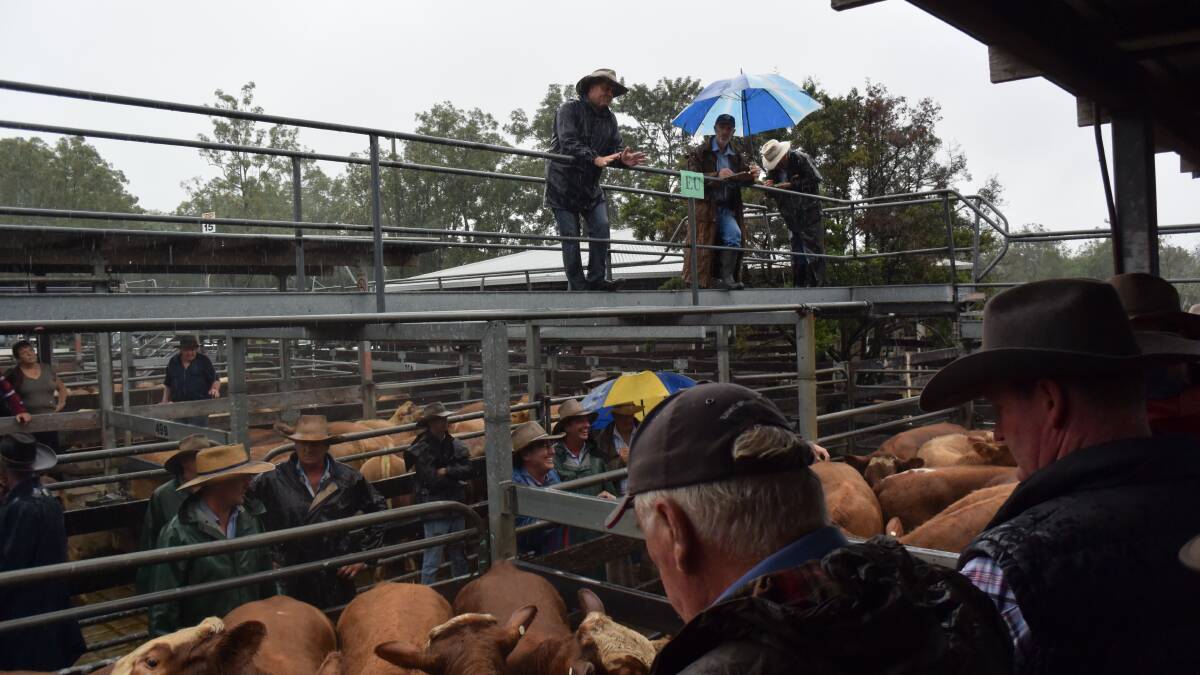
VERY few cows and heifers, or their progeny, are likely to leave grassed-up paddocks in the next few months, pointing to solid support for the cattle market as the rebuild kicks up a notch.
Subscribe now for unlimited access to all our agricultural news
across the nation
or signup to continue reading
The widespread rain across the north has already pulled big numbers out of the market and while the supply in the south hasn't dropped back significantly yet, strong demand is soaking it up quickly.
The Eastern Young Cattle Indicator is back above the $11 mark, having lifted 16 cents a kilogram carcase weight in the past week to sit at 1107c today.
Analysts believe there will still be an easing in cattle prices towards the end of this year but have pulled their forecasts in somewhat, suggesting it will be no more than a five per cent drop.
The wet winter, and talk of another La Nina next summer, means aggressive restocking is likely to be ongoing and that will always provide support for cattle prices.
ALSO IN BEEF:
Elders northern livestock manager Paul Holm said rain had now been widespread, and significant enough, across Queensland to be having a big effect on numbers.
There are areas, such as Julia Creek and Cloncurry, still waiting for rain but the big numbers of female cattle in central Queensland are now very well placed for feed.
"They won't be sold, and nor will their calves," Mr Holm said.
"We will see low turnover of livestock now until the end of the financial year and cattle that are marketed will be heavier."
Average cattle carcase weights reached 324.4kg per head in the three months to March, up a solid 10.8kg on the same period last year, according to the latest Australian Bureau of Statistics figures.
Meat & Livestock Australia analysts said the high cattle prices had provided the economic incentive to producers and feedlots to grow cattle out to heavier weights and the good season had provided the feed.
The increased proportion of slaughter being sourced from the feedlot sector also played a role. In the first quarter of this year 55pc of slaughtered cattle came from feedlots.
Numbers on feed are at all-time records.
The ABS figures show Queensland cattle averaged 336kg in the first quarter of 2022, the highest of any state and 12kg higher than the national average.
In the south, store steers are getting very dear for this time of year, despite reasonable numbers still hitting the market in most places.
Some pockets of Victoria are dryer than normal for autumn but overall the season would be considered good and certainly the demand is such that there is strong competition for any supply, agents said.
South Australia is more patchy and agent Scott Bittner, PPHS, said supply had slowed right down with one of the smallest yardings at Naracoorte for the year this week.
However, it was not so much rain-driven but rather the fact available numbers had been depleted on the back of high prices throughout the year, he said.
The job remains firm to fractionally dearer, he said, with kill heifers in particular very dear.
Very few females are going to slaughter, meaning the rebuild is entrenched and there is plenty of interest around the rails to keep prices strong.
Thomas Elders Markets' Matt Dalgleish said the female slaughter ratio for the first quarter of 2022 has come in at 40.9pc, which is the lowest quarterly figure seen since December 2011, when it dipped to 39.8pc. During the entire 2011 season the FSR averaged 43pc and the Australian cattle herd grew by 7.4pc over that year.
"We don't think the FSR will stay at that low level for the entire of this year but even in the mid to low 40s, it is still in line with a strong rebuild of 4 to 5pc," Mr Dalgleish said.
For all the big news in beef, sign up below to receive our Red Meat newsletter.


